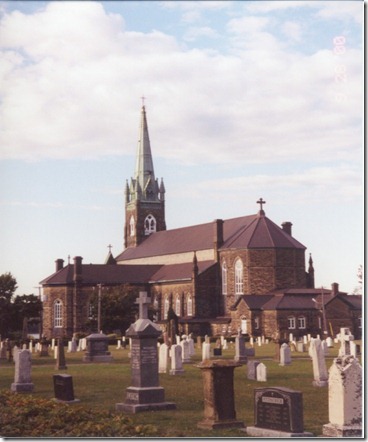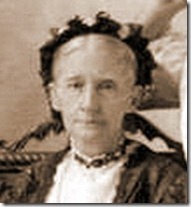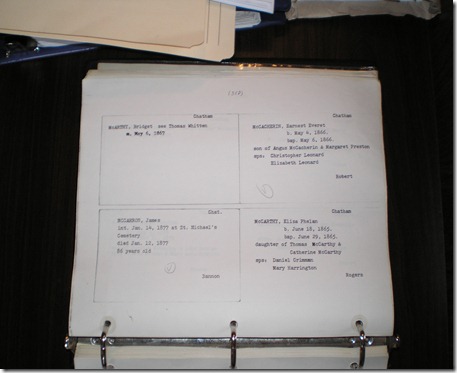Where lies James McCarron………… ?

St. Michaels Basilica and Cemetery
There is no new uncovering of facts here but what this does accomplish is raise questions yet to be answered. It tells a basic story without all , organizing and describing and posting these small facets of our ancestors past comings and goings is that almost every discovered fact very often leads to more questions. Thus this serves as a place to bring up those questions and hopefully as time goes by some of the unknowns will be resolved. At least this becomes a place for me to be reminded of what needs further looking into in order to uncover some long lost family information.To explain, James McCarron is the father of Margaret McCarron, later married to John McGinnis Sr. This would make James McCarron the Great-Great Grandfather to my generation, the direct descendants of Mary Agnes McGinnis.
The man holds the distinction of the oldest identified ancestor in the McGinnis/McCarron line and the oldest ancestor born in Ireland and buried on North American soil. The actual proof of his existence can be found in but two pieces of documentation found in Chatham, New Brunswick records.
The first piece of evidence regarding his identity is to be found is his inclusion in the 1871 Canadian Census living in the household of what most certainly is his daughter, Margaret McCarron McGinnis. This was some ten years following the death of Margaret’s husband John McGinnis.
Margaret McGinnis Transcription 1871 Canadian Census
Chatham division 3, pages 1 & 2, Margaret McGinnis, 50, Patrick, 23, James, 22, John, 20, Arthur, 18, Sarah, 16, Hugh, 13. Also in same household, McCarron, James, 80, Mary, 40. Patrick and James are listed as carpenters, John as a school teacher, Arthur as a laborer. Sarah also has an occupation listed that is unreadable.



Margaret McCarron McGinnis
Circa 1890, She left her Father in the Graveyard of St. Michaels
Note: The dark material outlining her head appears to be the back of a chair or something she is sitting on at the time
The second piece of evidence is his record of death and burial in the archives of St. Michael’s parish church in Chatham. The death date is followed by burial two days later. His burial in the church cemetery is undisputable however a search of an hour or two in the rain during my last visit to Chatham, in the summer of 2007, even with the help of two friends, we could not locate his grave. Is it lost to time, I certainly hope not for it needs to discovered and honored in some respectful way.As in many old cemeteries the earliest graves tend to lack maintenance over the years as cemetery funding diminishes and family, relatives and descendants die off or leave the area. This eventuality very well may be the case for the grave of James McCarron leaving the possibility that his grave marker may have been destroyed by the weather alone. The museum historical records merely record the death and burial information and the actual grave location was not indicated. The museum directed me to a caretakers office to see if they had the precise location but that facility was not open the day I was there. The grave location might be found in those separate records maintained by the parish Sexton or others in the church office with access to the actual records.

James McCarron Death and Burial Record
(lower left entry)
Found and photographed at the St. Michael’s Museum and
Historical Center
The 1871 census really adds more questions than facts. Ten years after her husbands death Margaret has then living in her household, other than her children, what appears to be her father and most likely a sister. What are the circumstances that allowed two family members, most likely rather newly arrived from Ireland, to join Margaret and her brood? Who or what provided the funding for this to occur? Another question for another time.
This all leads to another rather basic unanswered question regarding the family survival after the death of John Sr.. Was Margaret and her children left in near poverty or was it actually the opposite of conditions? However, this needs some additional thought for a posting on the subject at a later date. Of course the primary question in this posting is where in St. Michael’s cemetery does James McCarron lie? Someday I hope to find the grave.


